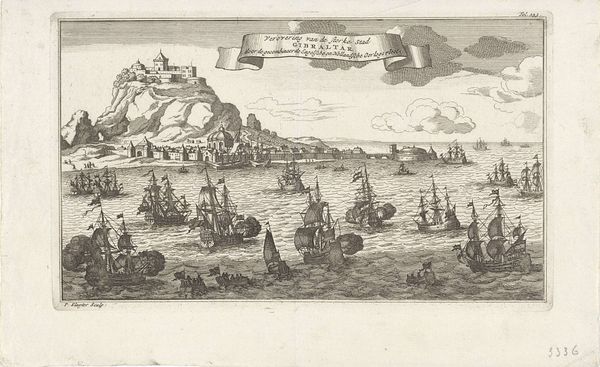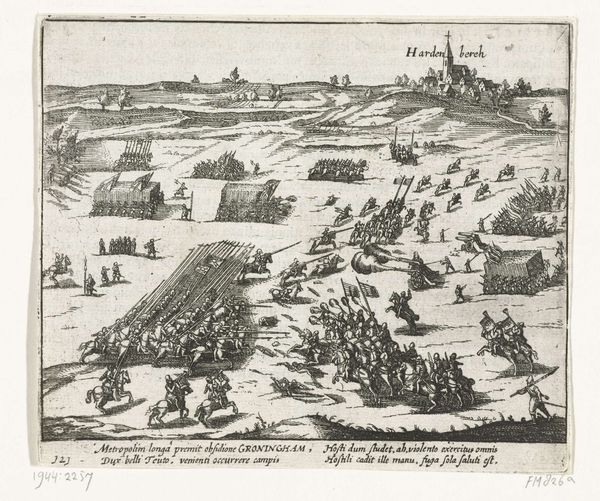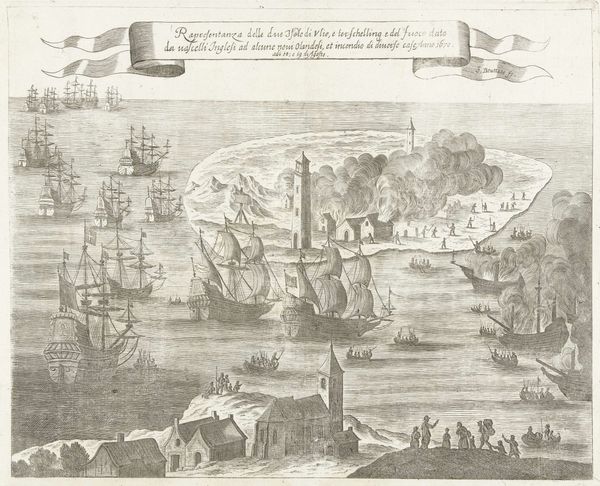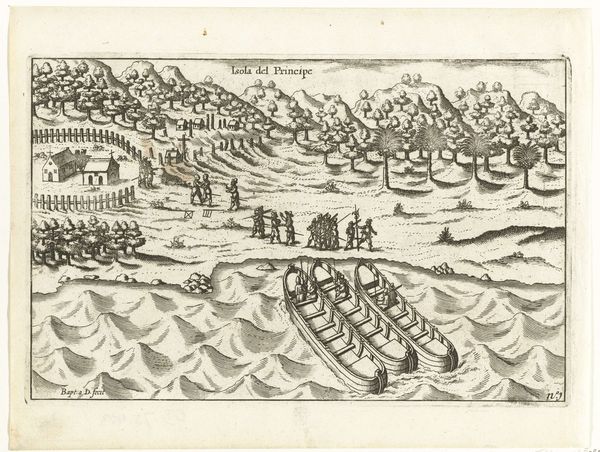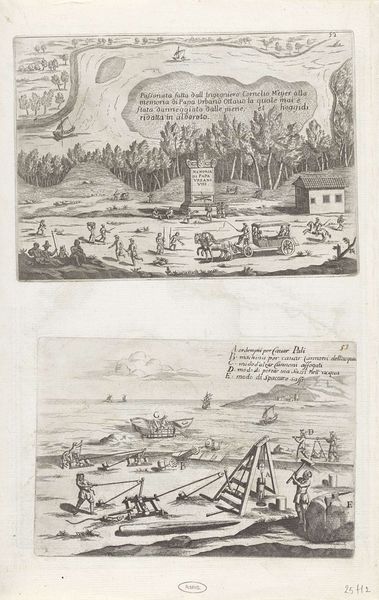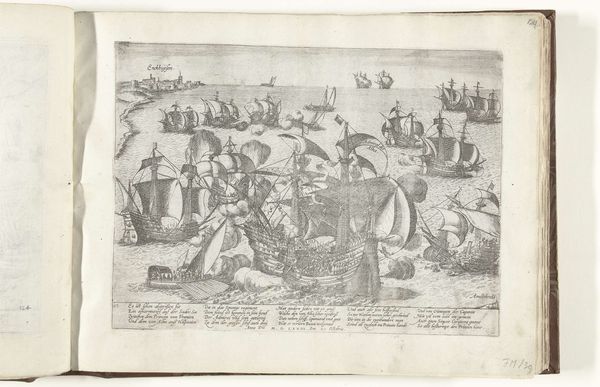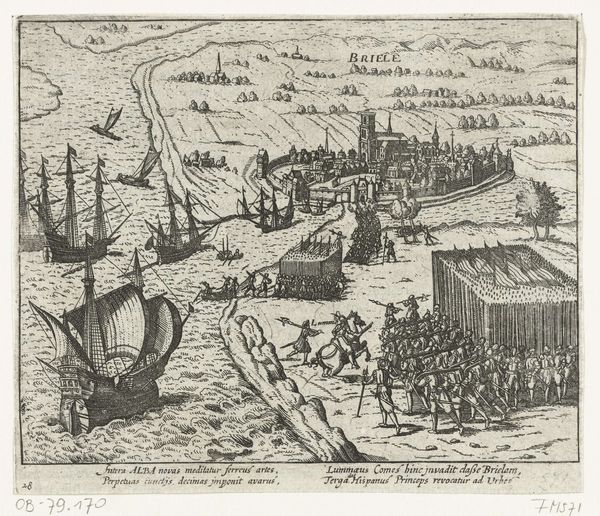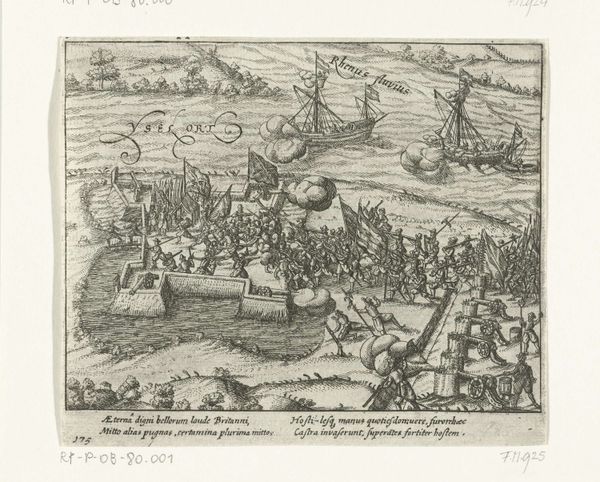
print, engraving
#
dutch-golden-age
# print
#
landscape
#
history-painting
#
engraving
Dimensions: height 309 mm, width 328 mm
Copyright: Rijks Museum: Open Domain
Curator: This engraving, dating roughly between 1628 and 1649, captures “Piet Hein in gevecht met de Duinkerkers," a naval battle. It's here in the Rijksmuseum. Editor: Woah. It’s incredibly detailed—like looking at the whole sea teeming with ships. There's an almost overwhelming energy here, don't you think? A beautiful, terrifying chaos. Curator: Absolutely. It’s quite a dynamic composition, considering it’s a print. What really gets me is the combination of precision and artistic license. It simultaneously functions as a historical document and, well, an emotionally charged tableau of a key event. We’re presented with an exciting collision of cartography and battle report! Editor: Precisely. These scenes of naval dominance served to embolden, yes, but also justified colonial projects. We must be attentive to who benefits from such romantic depictions of military successes. For the Dutch Republic, this was clearly intertwined with economic and territorial expansion. This artistic celebration also whitewashes the exploitation of land and labor by the VOC that such sea power facilitated. Curator: Yes, I see your point completely. One must consider the wider narrative. At first glance, it presents as simply an exciting maritime scene with brave protagonists; actually, it can be viewed through a critical lens of colonialism and the assertion of power… and greed, let’s be frank. Editor: Indeed. The piece reveals, maybe unintentionally, the inherent violence in those ventures. The ships here become symbols of that violence, but also symbols of power. Note that ships belonging to states beyond Europe tended not to receive comparable representation—their vessels were, in comparison, quite denigrated by the image makers in the West. Curator: Food for thought there. I find myself looking again, trying to reframe my initial impression. It's fascinating how one image can hold such complexity. Thanks for shifting my viewpoint. Editor: Art, or should I say, engravings like this are never simple…they are conversations, they should encourage conversation with our past and with ourselves. We must embrace and facilitate new perspectives so we might continue our inquiry of this and similar works.
Comments
No comments
Be the first to comment and join the conversation on the ultimate creative platform.



